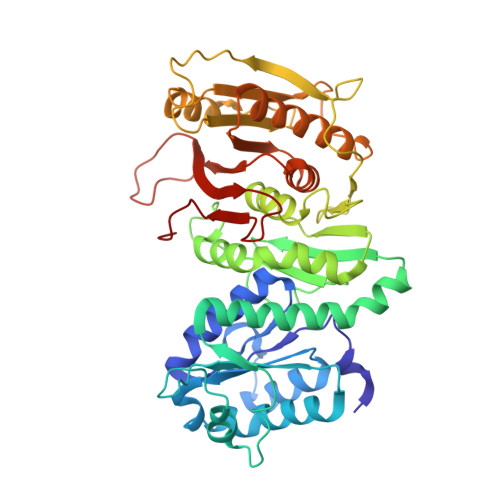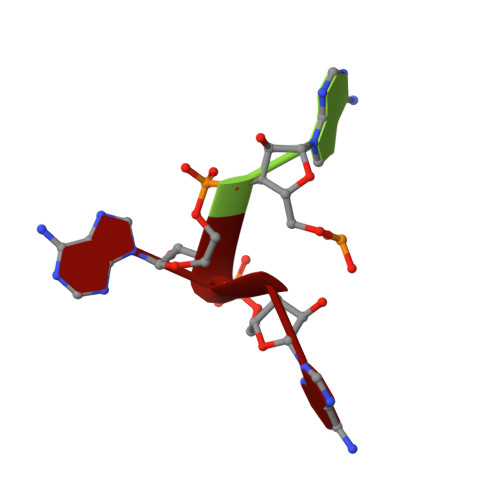Cyclic nucleotide-induced helical structure activates a TIR immune effector.
Hogrel, G., Guild, A., Graham, S., Rickman, H., Gruschow, S., Bertrand, Q., Spagnolo, L., White, M.F.(2022) Nature 608: 808-812
- PubMed: 35948638
- DOI: https://doi.org/10.1038/s41586-022-05070-9
- Primary Citation of Related Structures:
7QQK - PubMed Abstract:
Cyclic nucleotide signalling is a key component of antiviral defence in all domains of life. Viral detection activates a nucleotide cyclase to generate a second messenger, resulting in activation of effector proteins. This is exemplified by the metazoan cGAS-STING innate immunity pathway 1 , which originated in bacteria 2 . These defence systems require a sensor domain to bind the cyclic nucleotide and are often coupled with an effector domain that, when activated, causes cell death by destroying essential biomolecules 3 . One example is the Toll/interleukin-1 receptor (TIR) domain, which degrades the essential cofactor NAD + when activated in response to infection in plants and bacteria 2,4,5 or during programmed nerve cell death 6 . Here we show that a bacterial antiviral defence system generates a cyclic tri-adenylate that binds to a TIR-SAVED effector, acting as the 'glue' to allow assembly of an extended superhelical solenoid structure. Adjacent TIR subunits interact to organize and complete a composite active site, allowing NAD + degradation. Activation requires extended filament formation, both in vitro and in vivo. Our study highlights an example of large-scale molecular assembly controlled by cyclic nucleotides and reveals key details of the mechanism of TIR enzyme activation.
Organizational Affiliation:
School of Biology, University of St Andrews, St Andrews, UK.















